Pot marigold flower
Pot marigold flower specifications
- Scientific name : Calendula officinalis
- Common Name : Calendula, pot marigold, common marigold, Ruddles, Mary’s gold, Scotch marigold
- Order : Asterales
- Family : Asteraceae
- Genus : Calendula
- Plant Type : Perennial, annual
- Mature Size : 1-2 ft. tall, 1-2 ft. wide
- Sun Exposure : Full, partial
- Bloom Time : Spring, summer, fall
- Flower Color : Yellow, orange, red, white, pink
- Native : Western Europe, southwestern Asia, Macaronesia, and the Mediterranean region
Pot marigold flower or Calendula ( Calendula officinalis ) is a short-lived perennial in warmer climates, but in cooler climate zones it is usually grown as an annual flower in garden beds and containers. Although commonly known as pot marigold, calendula is different from the common marigold ( Tagetes spp ).
It is, however, part of the Asteraceae family along with daisies and chrysanthemums, and has a daisy-like appearance. It is planted in spring after the last frost and grows relatively quickly, flowering six to eight weeks from seeding.

The common name of pot marigold originated from the gold flowers that bloomed during the festivals of Mary in Renaissance times ( mary + gold = marigold ). Ancient Greek, Roman, Arabic, and Indian cultures used calendula as a medicinal herb and as a dye for fabrics, food, and cosmetics. Today, gardeners grow these plants for their cheery flowers and profuse blooming habit. Though they most commonly are seen in varieties with yellow, orange, and red flowers, you can also find them in subtle shades of pink and cream.
Habitat pot marigold flowers
The main habitat of marigold is the Mediterranean or southern European continent. However, the calendula plant grows naturally in most temperate regions of the world from northern Europe ( southern England ) to the Zagros highlands on the Iranian plateau.
read more : Everything about chamomile flower : How to Plant & care for them
Types of pot marigold flowers
Calendulas belong to a genus of flowering plants that contain only about 20 species. Among these 20 species, not all are popular. Different types of Calendula flowers are found all over the world. Some of the most popular types of Calendulas have been listed down for you.
-
Touch of Red
Touch of Red is a calendula variety that can be either red or orange, but all flowers have red-tipped petals and deep red bellies.
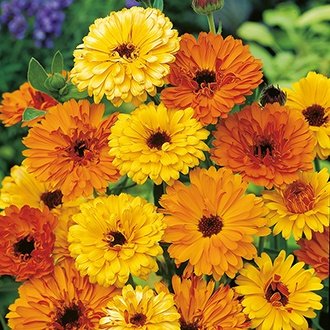
-
Pink Surprise
Pink Surprise is a bit of a misnomer for this calendula cultivar since its flowers are actually gold and yellow. However, some do have pink edges and there are some types of Pink Surprise calendula that are truly pink with golden highlights, too.
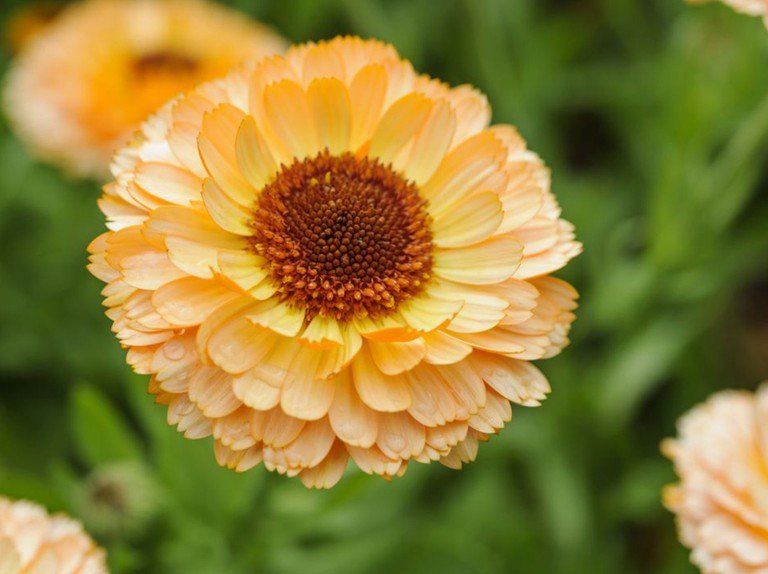
-
Greenheart Orange
Greenheart Orange is a unique type of calendula that has flowers with orange petals around lime-green centers. It’s quite different from other kinds of calendula and is best grown alongside these other varieties for a truly stunning display of all the colors in the rainbow.
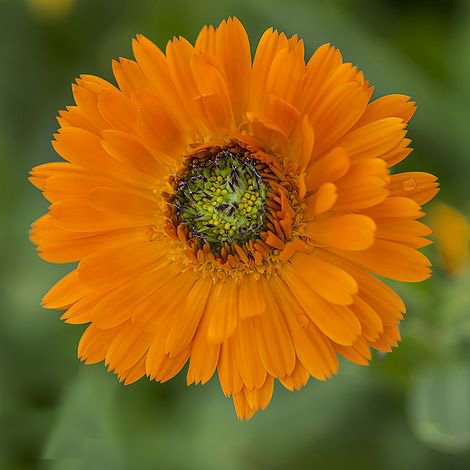
-
Bronzed Beauty
As the name implies, Bronzed Beauty is the perfect calendula variety for summer. It produces coppery peach and cream-colored flowers atop tall stems. You’ll want summer to never end!
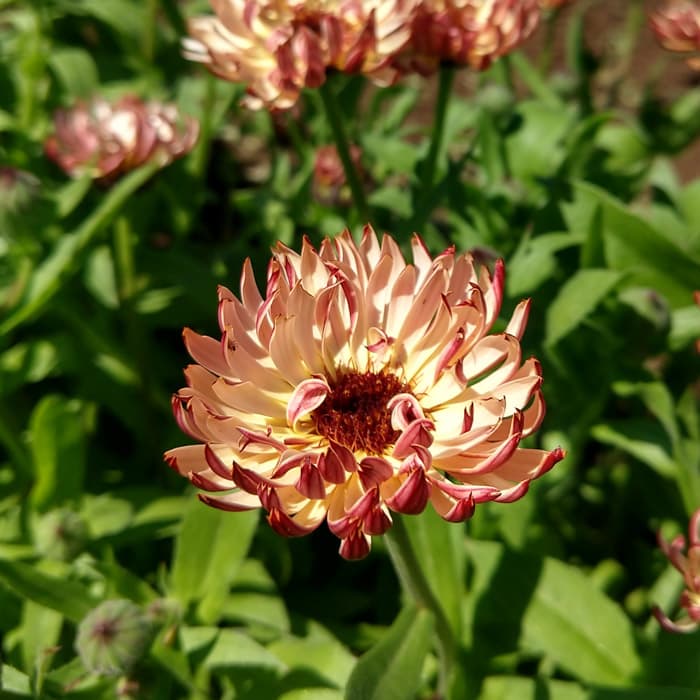
-
Tangerine Cream
Tangerine Cream produces bicolor double blooms in colors like cream and orange.
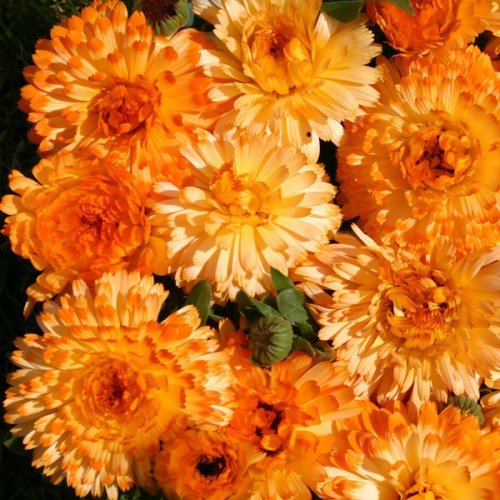
-
Citrus Cocktail
Citrus Cocktail is a great variety to consider if you’re short on time and space. This easy-to-care-for flower produces orange and yellow flowers and produces miniature, compact plants that are ideal for containers.
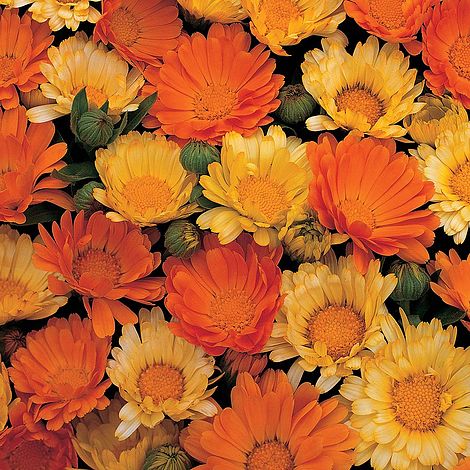
-
Dwarf Gem
Another compact plant, Dwarf Gum reduces double blooms in shades like yellow, apricot, and orange.
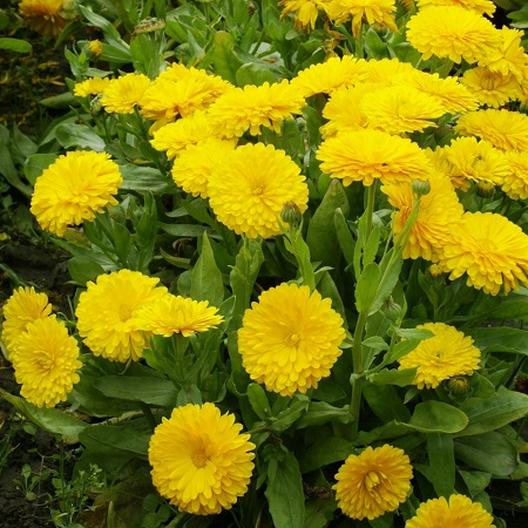
-
Sherbet Fizz
Sherbet Fizz is one of the most unique varieties you can grow, producing buff-colored flowers with red-tipped petals and underbellies.
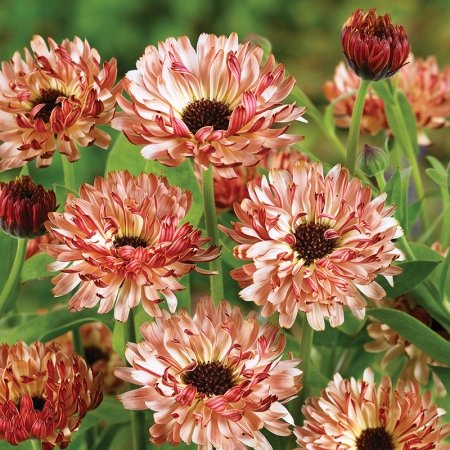
-
Fruit Twist
Fruit Twist is a variety that produces single, semi-double, and double flowers in bright yellow and orange shades. It’s sure to add a twist to your flower garden!
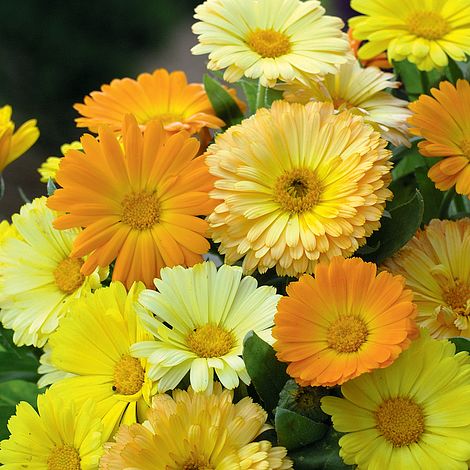
-
Golden Princess
Golden princess is a variety that has bright blooms and dark centers.
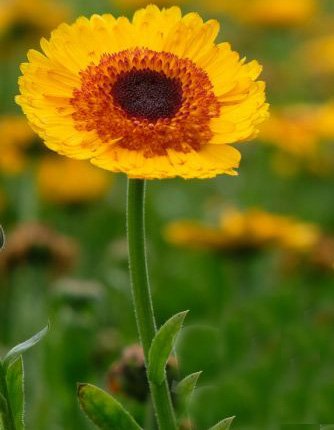
-
Bonbon
This fun-loving variety blooms early in the season, earlier than most other varieties, in fact. It is a dwarf plant that is perfect for a container.
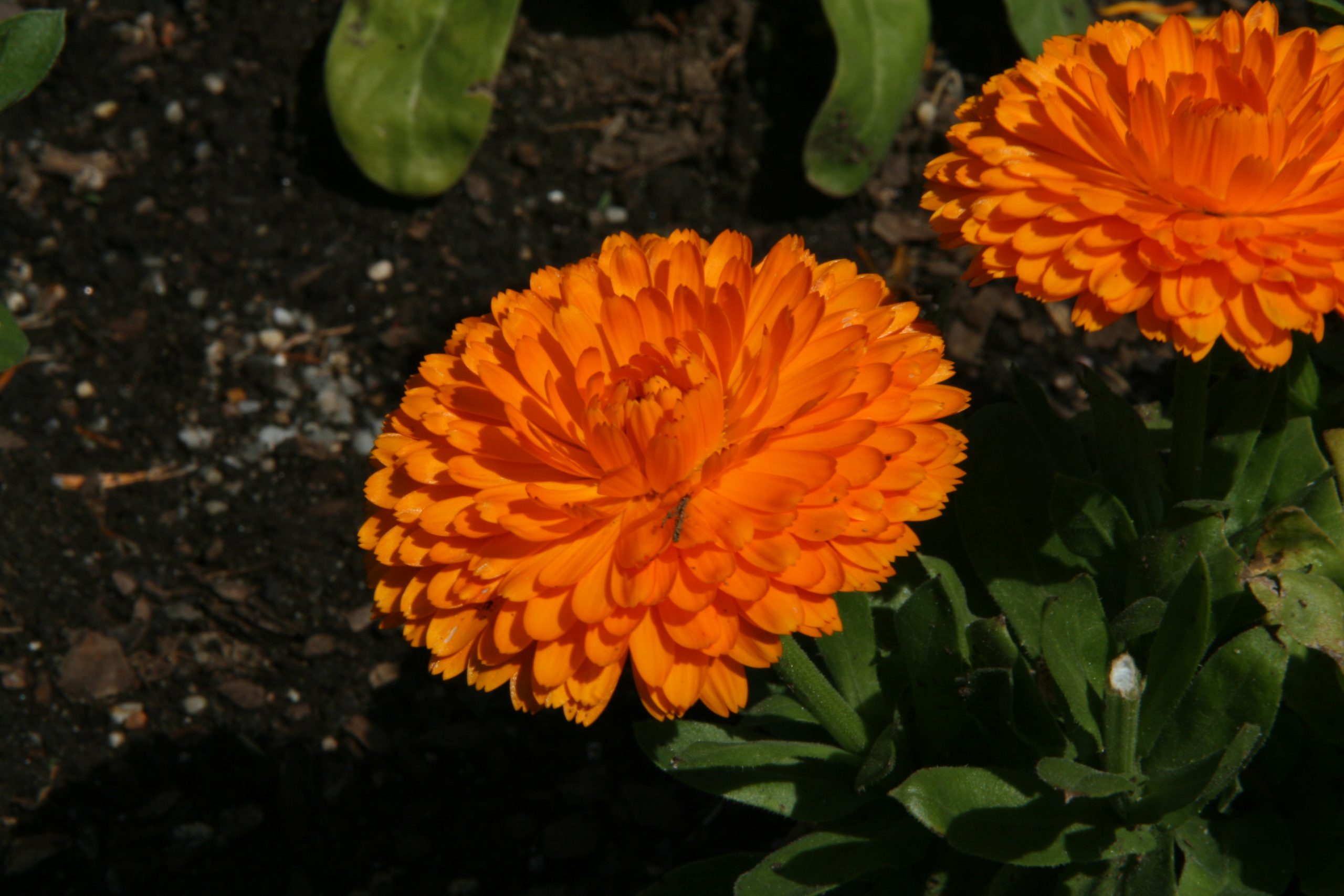
-
Prince
Prince is an excellent heat-tolerant variety. It is a tall variety, so not well-suited to space-constrained environments, but produces lovely yellow and orange flowers.
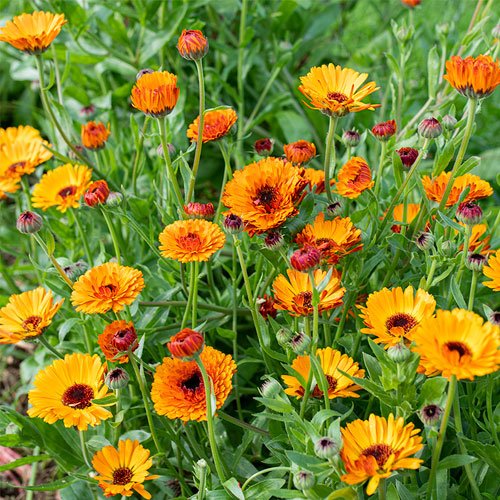
-
Kablouna
Kablouna is another yellow and orange variety to grow. It produces flowers with tufted centers, making a unique focal point in your garden. Another benefit of Kablouna is that it is one of the best at resisting mildew and similar fungal diseases.
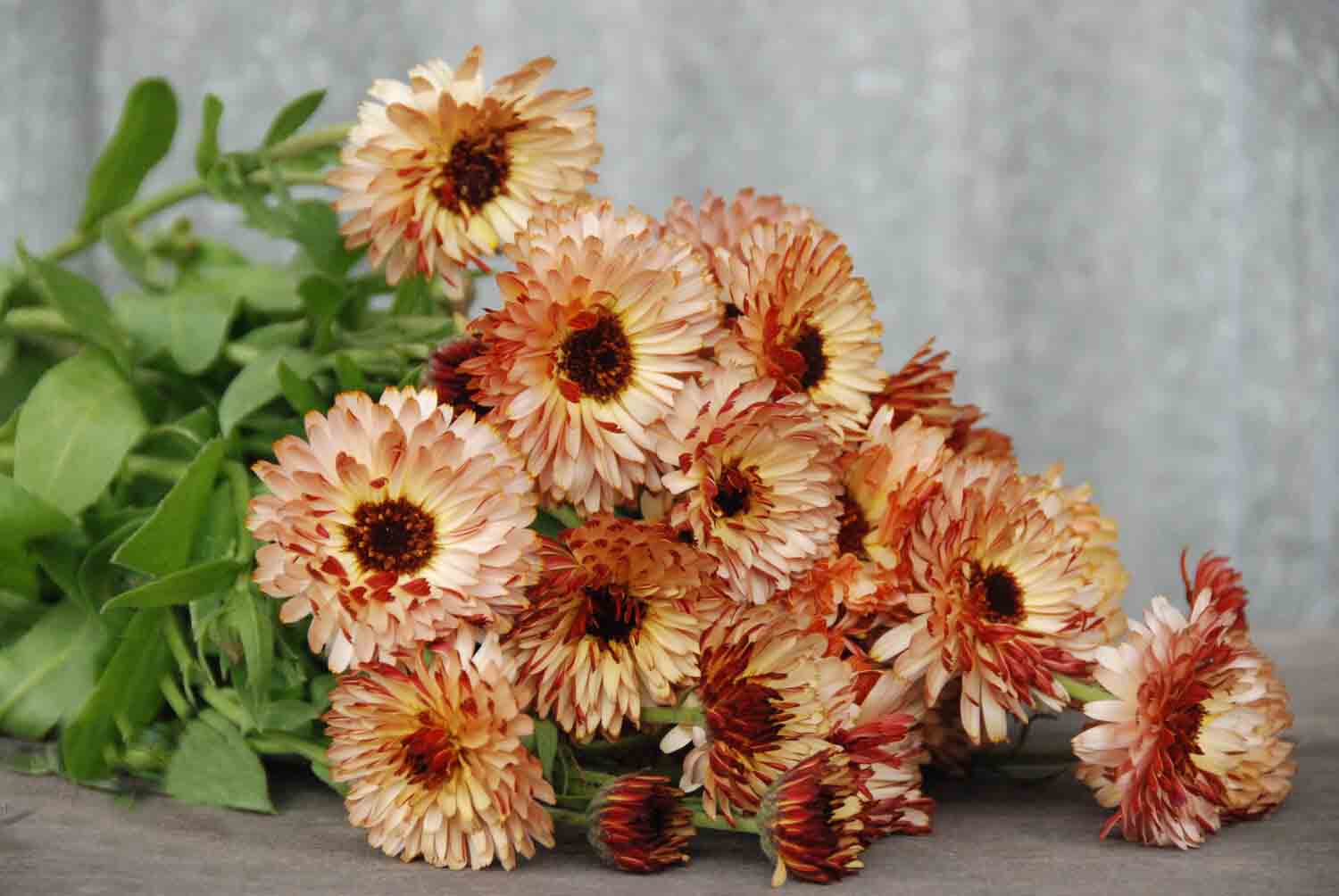
-
Flashback
Flashback offers gardeners a stunning blend of tricolor and bicolor flowers, with represented shades including apricot, cream, yellow, and peach.
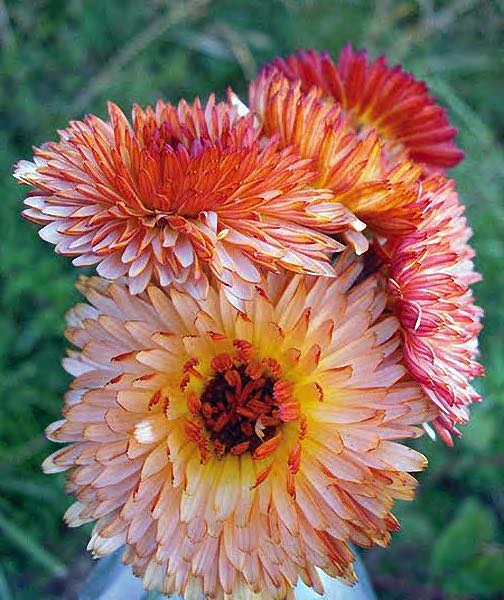
-
Pacific Beauty
If you’re looking for a heat-tolerant variety, Pacific Beauty is one of the best options to consider. It produces tall, sturdy stems with yellow and orange flowers.
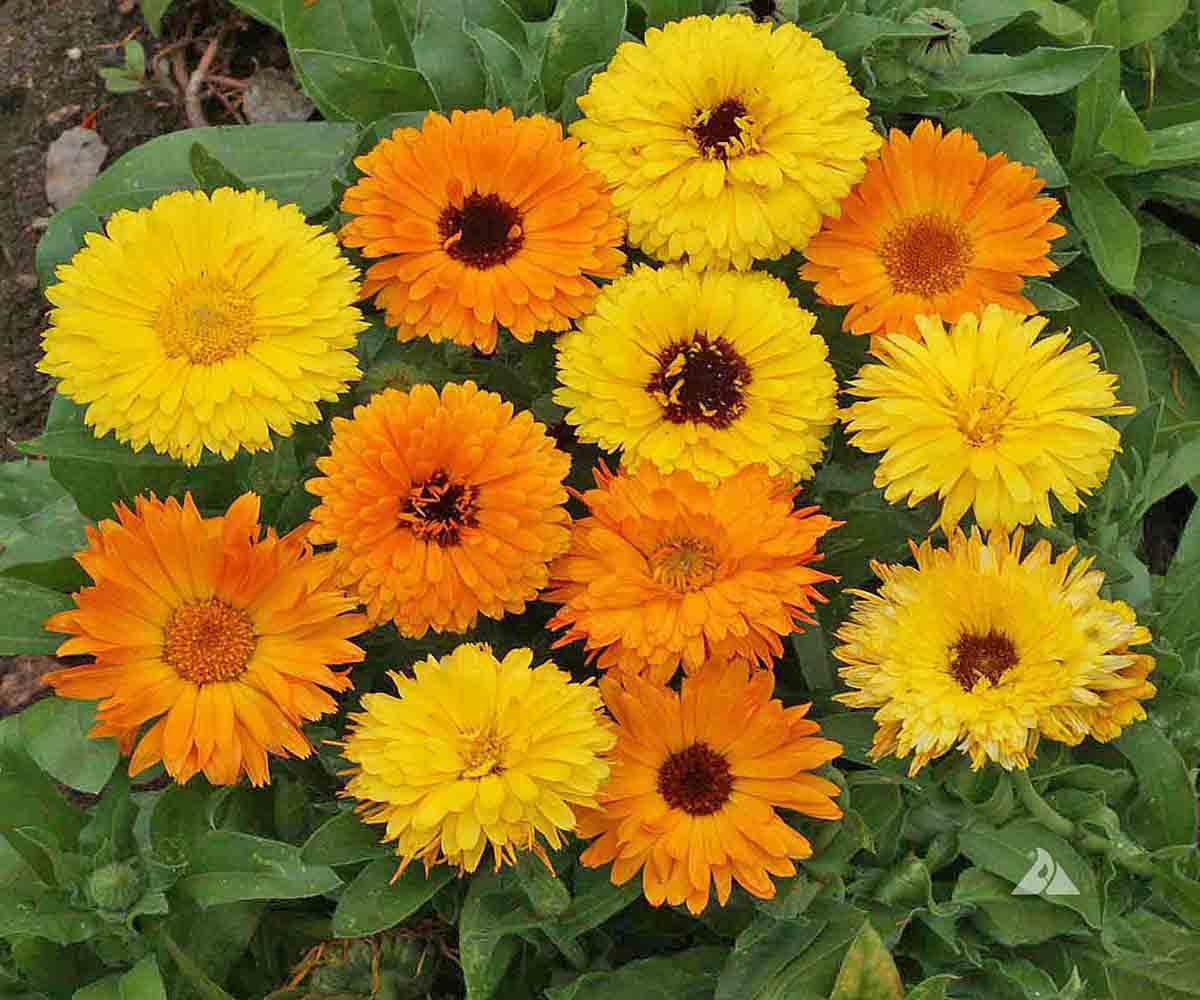
-
Calypso
Calypso is another calendula variety to consider growing. It produces double blooms on dense, compact plants, making it a good choice for a container or another environment where space is at a premium. It typically produces yellow and orange flowers with dark centers.
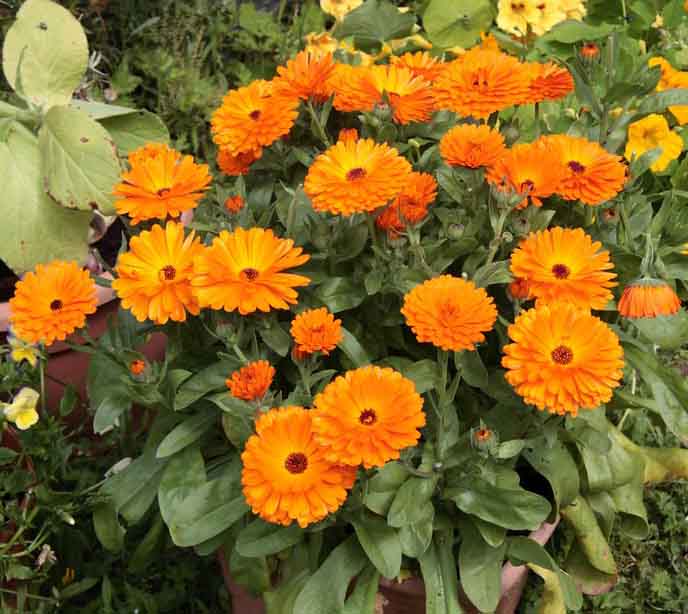
read more : Everything about yarrow flower : How to Plant & care for them
Calendula Care
Calendula is primarily an annual unless you live in hardiness zones 9 to 11, where it can be grown as a perennial.
It is easy to grow from seeds directly sown in the garden or containers. Plant seeds indoors in early spring and repot or transplant sturdy seedlings after the danger of frost has passed. Calendula will tolerate poor conditions but grows best when it has rich soil. Once established, it doesn’t need much water or fertilizer to grow. Calendula is a full sun plant, however, it’s not a fan of sweltering hot temperatures and might start wilting in intense heat.
Pinching back young plants will promote more compact, bushy growth and prevent the plants from becoming leggy. Deadhead the old flowers to encourage reblooming.
-
Light
Calendula generally prefers full sun, but it sometimes languishes during the hottest months unless it receives some afternoon shade.
-
Soil
Like most members of the daisy family, calendula needs a well-drained soil high in organic material. Dense, wet soils can cause the roots to rot. This plant tolerates a wide range of soil pH but prefers a slightly acidic to neutral soil (6.0 to 7.0).
-
Water
Water frequently until the plants are established. Mature plants thrive on only occasional watering. Avoid too much water with these plants.
-
Temperature and Humidity
Calendula prefers mild summer temperatures and may die away by the end of summer in very hot climates.
A hard freeze will kill the plants. If you expect some frost for a day or so, you can protect the plants with a frost blanket overnight and uncover as the sun warms up the air the next day. Three to four inches of mulch will also protect the plants from cold temperatures.
-
Fertilizer
Calendula does not need much in the way of feeding. If planted in fertile garden soil, it requires no additional feeding at all. Marginal soils may require feeding with a balanced, water-soluble fertilizer, but over-feeding can make the plants leggy and spindly.
Container plants require monthly feeding with a diluted, balanced fertilizer.
Harvesting Calendula
Collect calendula flowers in the late morning, after the dew has dried. Pick flowers when they are fully open. To dry the flowers, spread out the cut flower heads on a screen in a dry, shady spot. Turn them occasionally until they are papery dry, then store them in canning jars until ready to use.
How to Grow Calendula From Seed
Calendula is very easy to grow from seeds, which easily germinate and sprout. Seeds collected from the flowers can be saved and replanted; the plants will also readily self-seed in the garden.
Start calendula seeds indoors in a seed starter mix about six to eight weeks before the last frost date. Or, you can sow them directly into the garden just before the last spring frost date. Most plants bloom within two months of seeding. These plants very often self-seed in the garden; don’t mistake the seedlings for weeds.
Potting and Repotting Calendula
Although the “pot” in the common name “pot marigold” refers to this plant’s traditional use in cooking, calendula is also commonly planted in pots, where it thrives. Most varieties grow well in containers, particularly shorter cultivars.
Use any well-draining, organic potting soil, or make a mixture with a blend of half garden soil and half compost. Make sure the pot has plenty of drainage holes since this plant does not like to be soggy. Potted specimens need regular feeding with a balanced fertilizer.
read more : Everything about dandelion flower : How to Plant & care for them
Marigolds on the market
In Iran, marigold flowers are cultivated and produced in two ways :
- normal
- Greenhouse
Naturally cultivated marigold petals are yellowish-orange and have a more fragrant scent than the greenhouse. Petals of greenhouse marigold are bright orange and are very beautiful in appearance and with large and healthy flowers, but have less aroma.
Dried pot marigold flowers is one of Iran’s exports and has provided a great opportunity for Iranian traders to bring a lot of currency to the country by exporting this beautiful flower. Both types of marigolds can be exported because each has its own customer.
The export of dried marigold flowers has provided a great opportunity for wholesalers and exporters of marigolds and other medicinal plants to make significant profits.
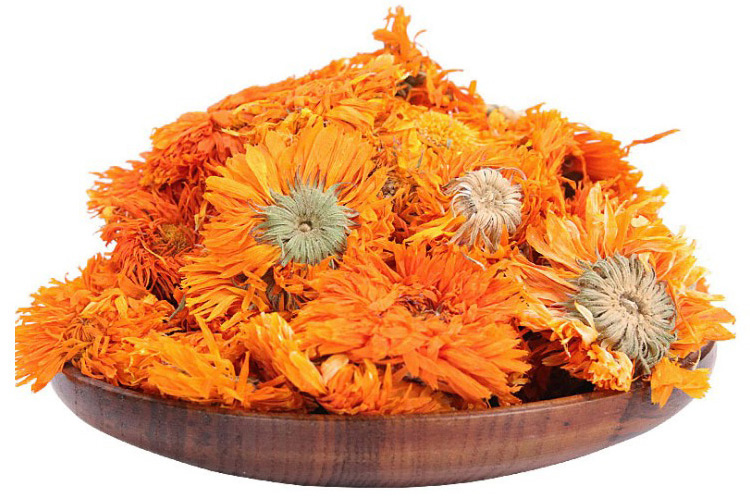
read more : Drying natural flowers | Introducing 8 wonderful ways to dry flowers
Factors effecting the price of marigold flowers
The price of marigold flower in the harvest season of this plant is cheaper than other seasons. Buying marigold flowers in bulk in early July to November is very affordable. The price of marigold is suitable for export due to the high volume of production of this product in the domestic market compared to other countries.
The desirable quality of this plant for supply to foreign markets has led to the spread exports of pot marigold flower and has led to currency appreciation and job creation in Iran. Numerous factors affect the price of marigolds for export.
The most important factors influencing the price of dried marigold flowers are the following :
- Demand
- Being natural or greenhouse
The higher the demand, the higher the export of marigolds and the higher the price. Another natural or greenhouse factor is the dry marigold. Since more money is spent on cultivating and harvesting greenhouse dried flowers and it also has a more beautiful appearance, it can be said that the selling price of dried marigold flowers is more in the greenhouse method; In other words, the more colorful the dried marigold flower, the higher its price.
read more : Everything about red poppy flower : How to Plant & care for them
Common Pests & Diseases
Calendula has no serious insect or disease problems. The plant can sometimes be susceptible to powdery mildew, which can be remedied by good air circulation.
Slugs and snails may feed on the plants, especially when they are young. Keep the ground clear of debris to minimize slug and snail damage. Aphids and whiteflies can sometimes be a problem. To control them, spray them with water or treat them with insecticidal soap.
notice : This article translated by google form Persian language. If you have any question or need more information please contact us or add a comment at the bottom of this page.



0 Comments